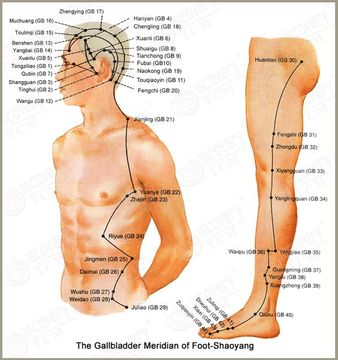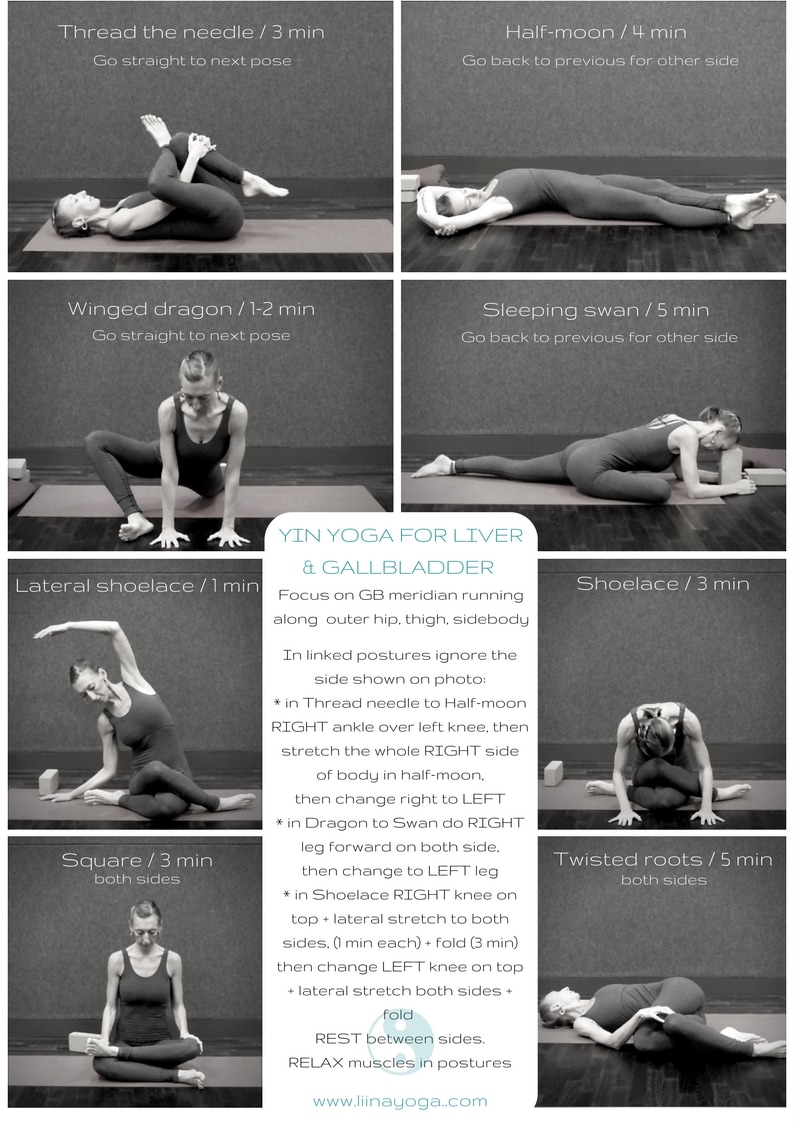SOME THEORY
Liver and Gallbladder work as a tandem. Liver being the yin organ (Zang) is considered more important as the yin organs carry/store special substance like Qi and/or blood, and also houses a spiritual essence and gallbladder the yang organ (Fu) which usually supports the yin organ and deals with waste product - though Gallbadder is an exception (and is therefore called a "bizarre" organ) it's physical function being to produce bile and help metabolize fats.
Why talk about organs when stretching the body in Yin poses? This is the more subtle layer of your practice. When on a physical level we feel the stretching of the tissues, we know that Yin yoga affects the connective tissues of the body and helps to maintain and increase healthy range of motion in our joints. But these long-held asanas also start to have an energetic effect on the body, increasing the flow of Qi (Prana) in meridians (nadis).
This mystical energy flowing within us is referred to by different names in different traditions: Chinese/Taosist name Qi (Chi), India / yogic / tantric Prana or Shakti, Native Americans call it Great Spirit, Christian mystics Holy Spirit and finally in modern science the electromagnetic field of the body is termed bioenergy. The energy moves through these channels in the body, when one channel becomes blocked, the energy being transported through it is stopped and Qi grows stagnant which will effect the overall functioning of the whole body-mind-spirit continuum.
Mind you - yin postures will not be as exact as lets say acupuncture is, in a posture we will be stretching and stimulating a broader area and most likely affecting several meridian lines at a time. In order for the practice to be more specific requires our ability to feel the more subtle aspects of the body and ability to work with our intention and attention.
Click on he links for a great aid to visualize where you LIVER and GALLBLADDER meridians are running in your body. Below are listed some of their functions:
|
|
Wood is about growth and balance. The image in nature is the tree which grows with roots solidly planted in the earth and trunk and branches organized into an effective structure. The Wood is split with the roots unseen (yin) and the trunk and the branches reaching towards Heaven (yang).
The emotion associated with the Liver & Gallbladder (and Wood element) is anger and frustration. This can be understood by the blocking of the movement forward - when there is obstruction to any movement, the outcome is frustration and anger. The Wood element / Liver Qi is balanced it allows us to feel and express and eventually transform anger appropriately. Liver is in charge of balancing the emotions - there is an evenness, a sense of balance and appropriate expression of all emotions. The response to challenges is even handed and shows confidence and purposefulness. There is a sense of control, even in the most challenging situations. There is a great deal of confidence and an innate sense of authority. The virtues of harmonious Liver QI are kindness, generosity, tolerance and forgiveness.
The Wood is associated with the Spring, a time of renewal and new growth. The Wood provides the power for movement especially upward toward the Fire, the sun. The movement is also outward away from the center to expand like the branches of a tree. This is the season to plant seeds for a future harvest, to look ahead and make new plans, formulate new ideas, make decisions and determine our direction for the coming year - and to take action.
SOME YIN YOGA PRACTICES
Below you will find some sequences which support your body especially during spring time to restore balance, detox the organ systems, nourish the digestive system, release tension and stress from spine and hips, and "deep-clean" the energy channels.
Obviously these sequences are not limited to spring. They could become handy when there are changes occurring in life, lack of clarity or vision/direction, times when action is needed! Use your yoga to balance your emotional state, soothe resentment and reactivity in order to see more clearly what is actually going on and what is the wisest way to respond.
If you are new to a Yin style of practice, be sure to read the main YIN PRINCIPLES below.
Also before trying out the sequences, you can do this GUIDED ONLINE CLASS for kidney and liver.
- never go to your maximum depth when entering a posture - pause when you feel first signs of resistance in the body
- keep softening and relaxing the outer muscles of the body
- remain still and patient and observant
SPRING YIN SEQUENCES
Click on download to get a PDF of the sequence card.
ENJOY!
BEGINNER FRIENDLY LIVER YIN
| YIN YOGA WITH GALLBLADDER FOCUS
| ||||
YIN DETOX
| |||
YIN POSTURES FOR LIVER QI
| |||







 RSS Feed
RSS Feed